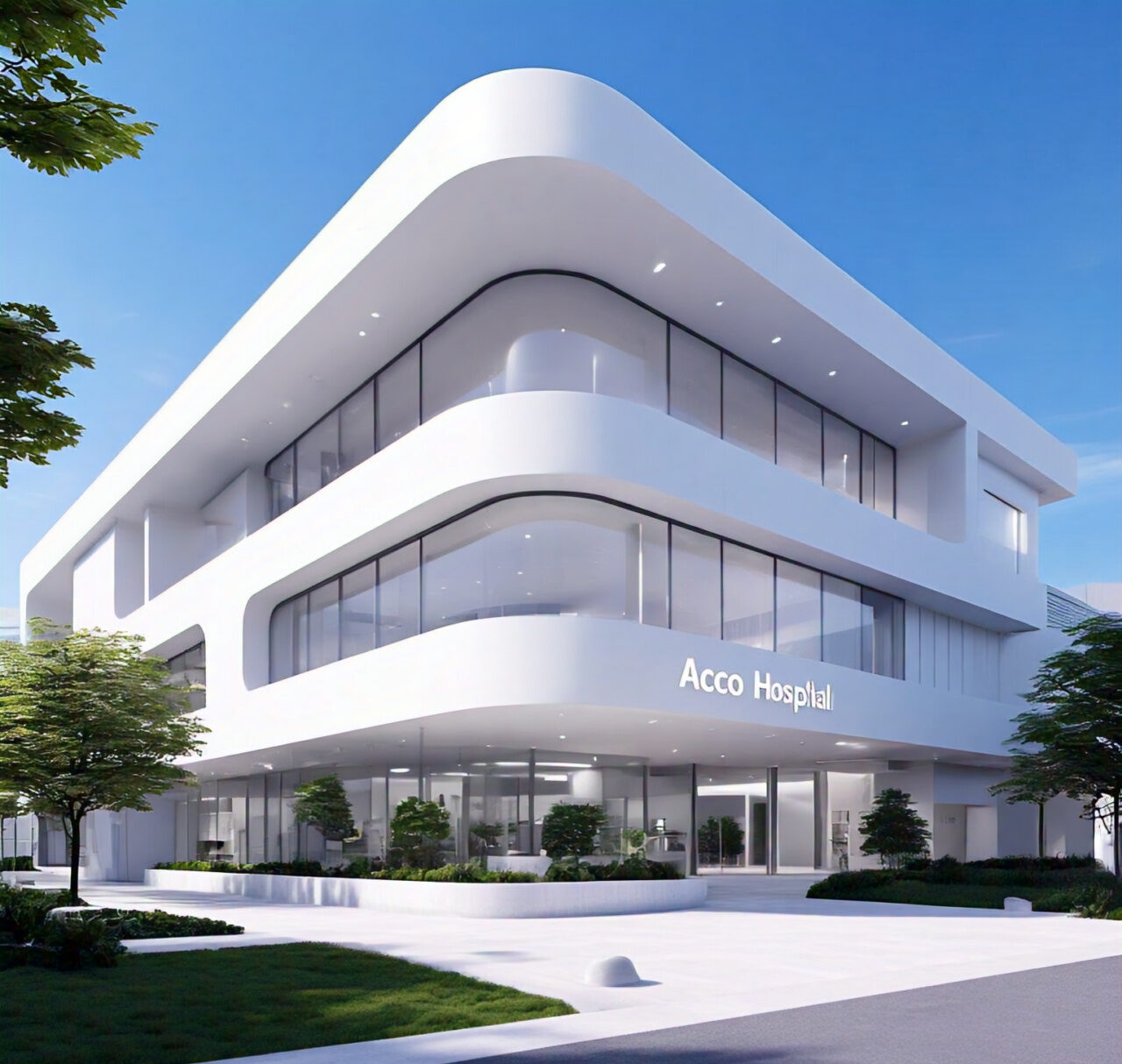
ACCO The Impact of Hospital Design in Pakistan on Healthcare Delivery
ACCO’s innovative approach to hospital design in Pakistan is making a significant impact on healthcare delivery by enhancing patient care, improving operational efficiency, and ensuring sustainability. The careful integration of modern design principles with advanced healthcare technologies is transforming the healthcare landscape, with far-reaching effects on both the patient experience and the effectiveness of healthcare services.
Key Impacts of ACCO’s Hospital Design on Healthcare Delivery:
1. Enhanced Patient Outcomes
- Design Focus: ACCO’s patient-centered design principles, which prioritize comfort, privacy, and healing environments, directly contribute to better patient outcomes. Features like private rooms, biophilic elements, and access to natural light help reduce stress and anxiety, improving recovery times.
- Impact: Hospitals designed with these elements see lower readmission rates, faster recovery times, and improved overall patient health outcomes. Patients experience greater satisfaction and comfort, which promotes better engagement with treatment plans.
2. Improved Operational Efficiency
- Design Focus: ACCO designs hospitals with workflow optimization in mind, ensuring that spaces are laid out to minimize inefficiencies in care delivery. This includes smart facility layouts that reduce travel distances for healthcare workers and centralize critical services such as emergency departments, operating rooms, and diagnostic areas.
- Impact: These designs enhance staff productivity, reduce response times in emergency situations, and allow healthcare professionals to focus more on patient care rather than logistics. This contributes to a smoother operation of healthcare facilities, leading to improved patient throughput and reduced waiting times.
3. Infection Control and Patient Safety
- Design Focus: Post-pandemic hospital designs emphasize robust infection control measures. ACCO integrates advanced HVAC systems, antimicrobial materials, and dedicated isolation areas into its designs to mitigate the spread of infections.
- Impact: Enhanced infection control leads to lower rates of hospital-acquired infections (HAIs), improving patient safety and the overall quality of care. This not only protects patients but also reduces the burden on hospital resources and staff.
4. Access to Advanced Healthcare Technologies
- Design Focus: ACCO ensures that hospitals are equipped with the latest medical technologies, including AI-driven diagnostic tools, smart patient monitoring systems, and telemedicine infrastructure. These technologies are seamlessly integrated into the design, allowing for easy adoption and use by healthcare providers.
- Impact: The inclusion of advanced healthcare technologies improves diagnostic accuracy, enables remote consultations, and enhances patient monitoring. This leads to better treatment outcomes, faster diagnosis, and more efficient use of healthcare resources, particularly in underserved areas.
5. Sustainability and Cost Efficiency
- Design Focus: Sustainability is a cornerstone of ACCO’s hospital designs, with features such as energy-efficient systems, water conservation measures, and the use of eco-friendly materials. Green certifications like LEED are often pursued to ensure that hospitals meet global sustainability standards.
- Impact: Sustainable design not only reduces the environmental footprint of hospitals but also leads to significant cost savings in terms of energy and resource consumption. Over time, these savings can be reinvested in patient care and medical technologies, improving the overall quality of healthcare delivery.
6. Patient-Centered Care and Healing Environments
- Design Focus: ACCO’s emphasis on creating healing environments through biophilic design, noise reduction strategies, and family-centered spaces enhances the patient experience. These spaces are designed to promote mental well-being and reduce the stress associated with hospital stays.
- Impact: Hospitals that focus on creating a healing environment see higher patient satisfaction rates, better emotional health outcomes, and more cooperative patient behavior. This shift towards patient-centered care is a critical factor in improving long-term health outcomes and overall patient well-being.
7. Adaptability and Flexibility for Future Needs
- Design Focus: Hospitals are designed to be flexible and adaptable to future healthcare needs, such as expansions, technological advancements, or responses to health crises. Modular construction and adaptable layouts allow hospitals to grow and change without major disruptions.
- Impact: This adaptability ensures that hospitals remain functional and relevant in the face of changing healthcare demands, such as pandemics or the introduction of new medical technologies. It also allows for more cost-effective expansions and reduces the need for expensive overhauls.
8. Improved Accessibility and Inclusivity
- Design Focus: ACCO places a strong emphasis on accessibility, ensuring that hospitals cater to patients with disabilities by incorporating ramps, elevators, wide corridors, and assistive technologies for those with sensory impairments.
- Impact: Improved accessibility ensures that healthcare services are available to all segments of the population, promoting inclusivity and reducing health disparities. This leads to better health outcomes for marginalized groups and ensures equitable care for all.
9. Focus on Community Health
- Design Focus: Hospitals are increasingly becoming community health hubs, with spaces dedicated to preventative care, wellness programs, and health education. ACCO designs hospitals that can serve as centers for public health initiatives, fostering a more proactive approach to healthcare.
- Impact: By integrating community health services, hospitals can reduce the burden on acute care facilities and focus more on prevention and wellness. This shift leads to healthier populations and lowers the long-term demand for intensive medical interventions.
10. Staff Well-being and Efficiency
- Design Focus: The inclusion of ergonomic workspaces, rest areas, and wellness facilities for staff in hospital designs is essential to reducing burnout and improving job satisfaction.
- Impact: A focus on staff well-being leads to better performance, reduced turnover rates, and improved care quality. Happy, healthy staff are better able to deliver high-quality patient care, contributing to improved health outcomes.
Conclusion:
ACCO’s impact on hospital design in Pakistan is revolutionizing healthcare delivery by focusing on patient-centered care, sustainability, operational efficiency, and adaptability. These designs are not only improving the quality of healthcare but are also making it more accessible, sustainable, and future-ready, setting a new standard for healthcare facilities in the region.
4o



